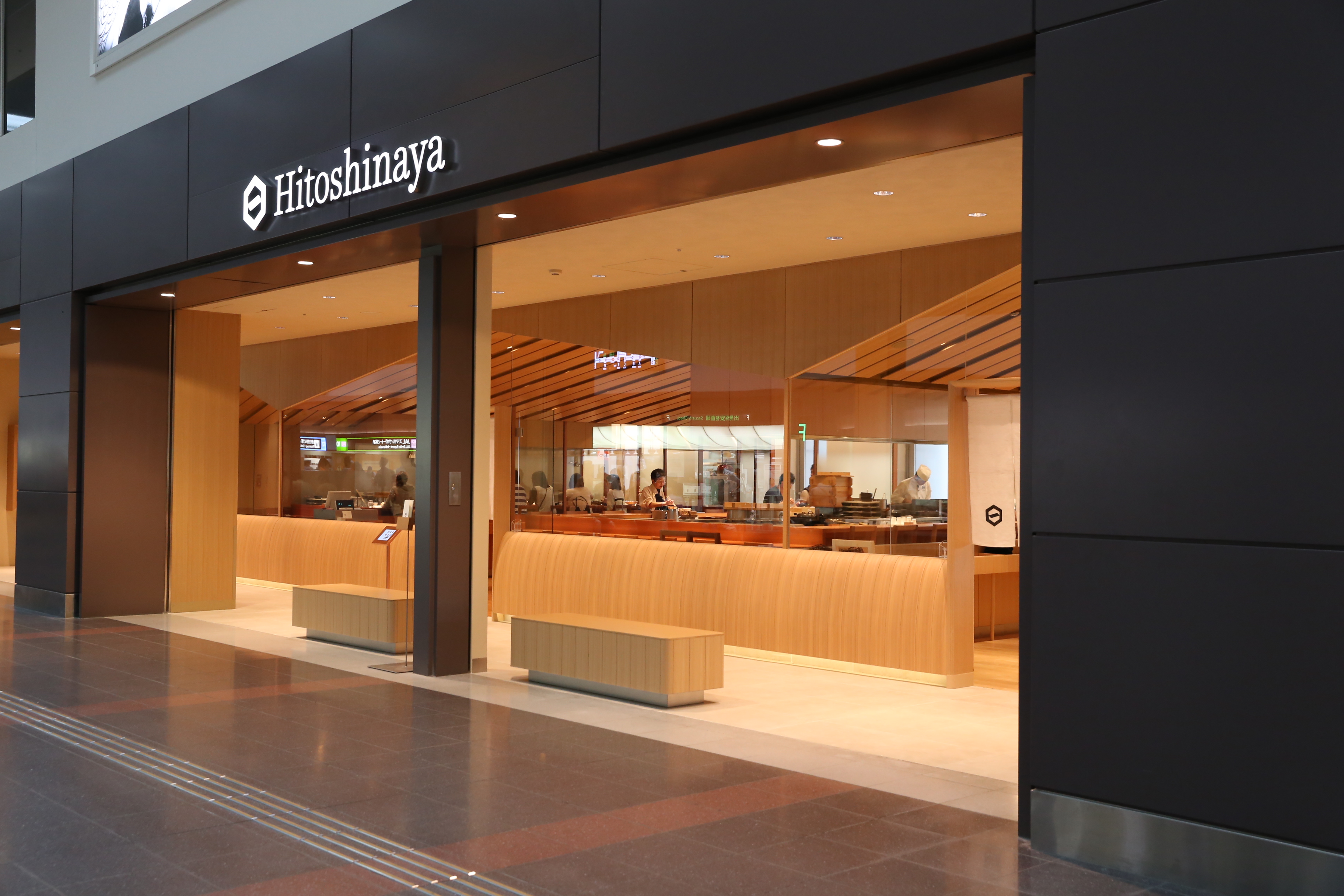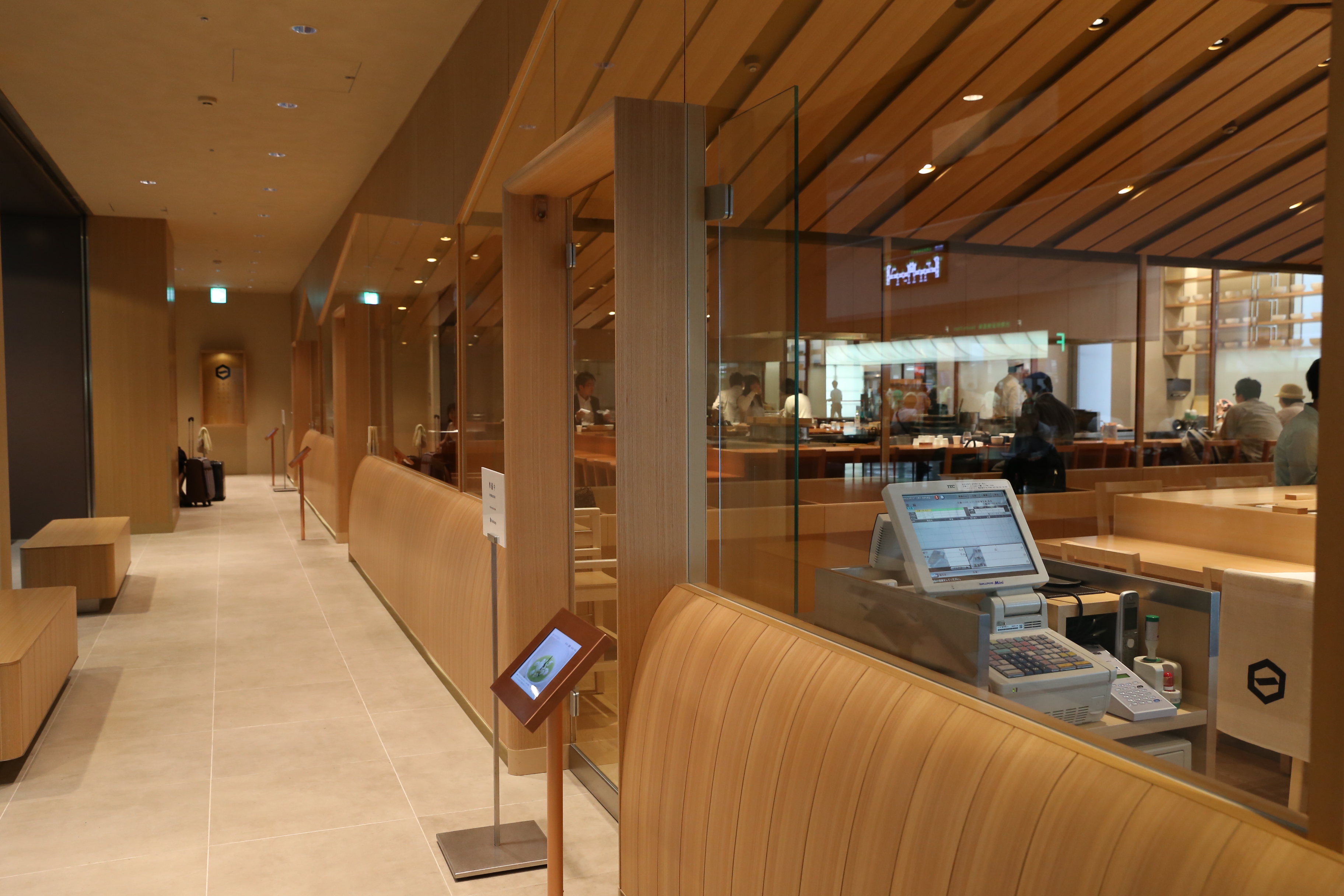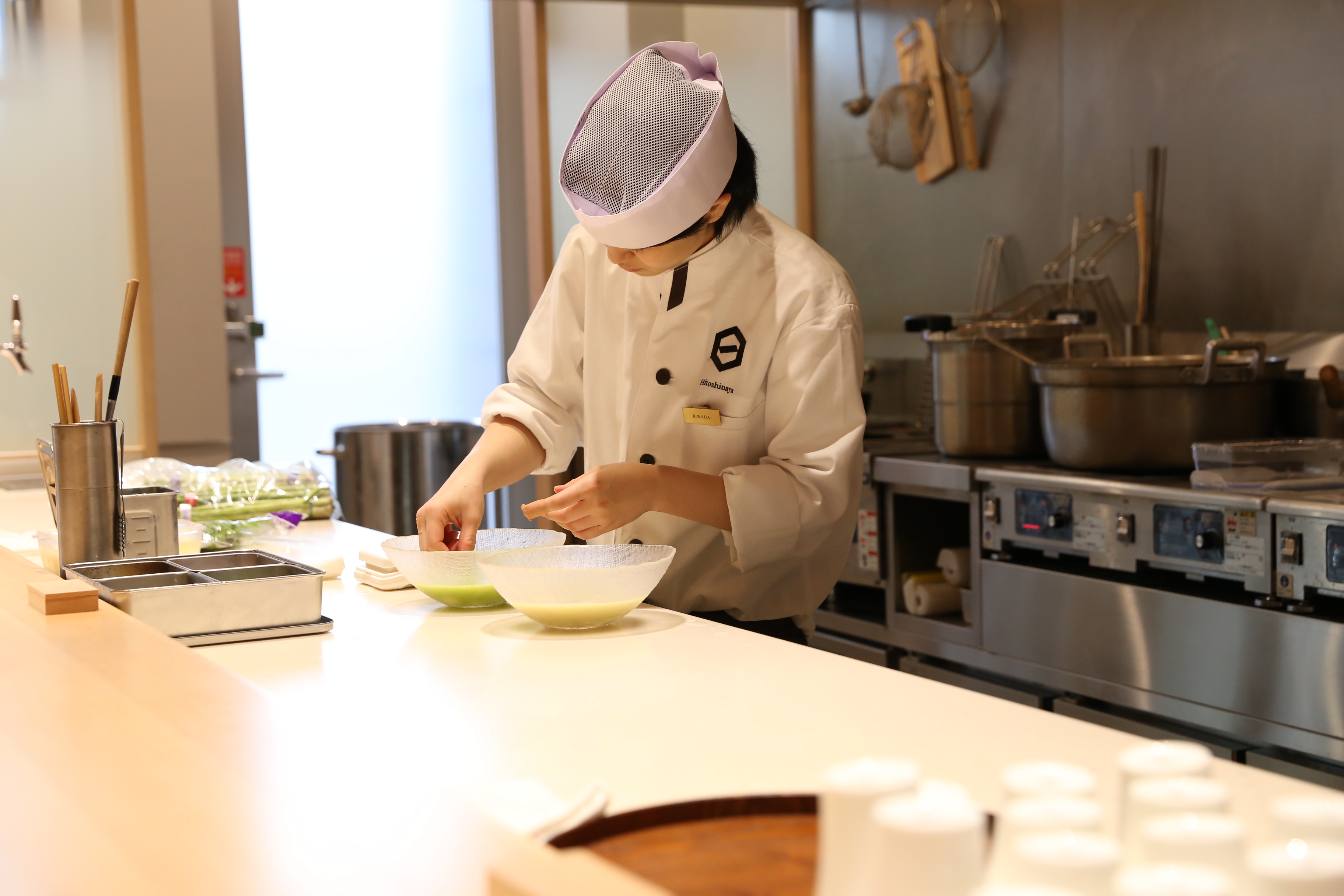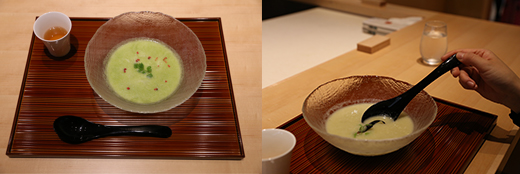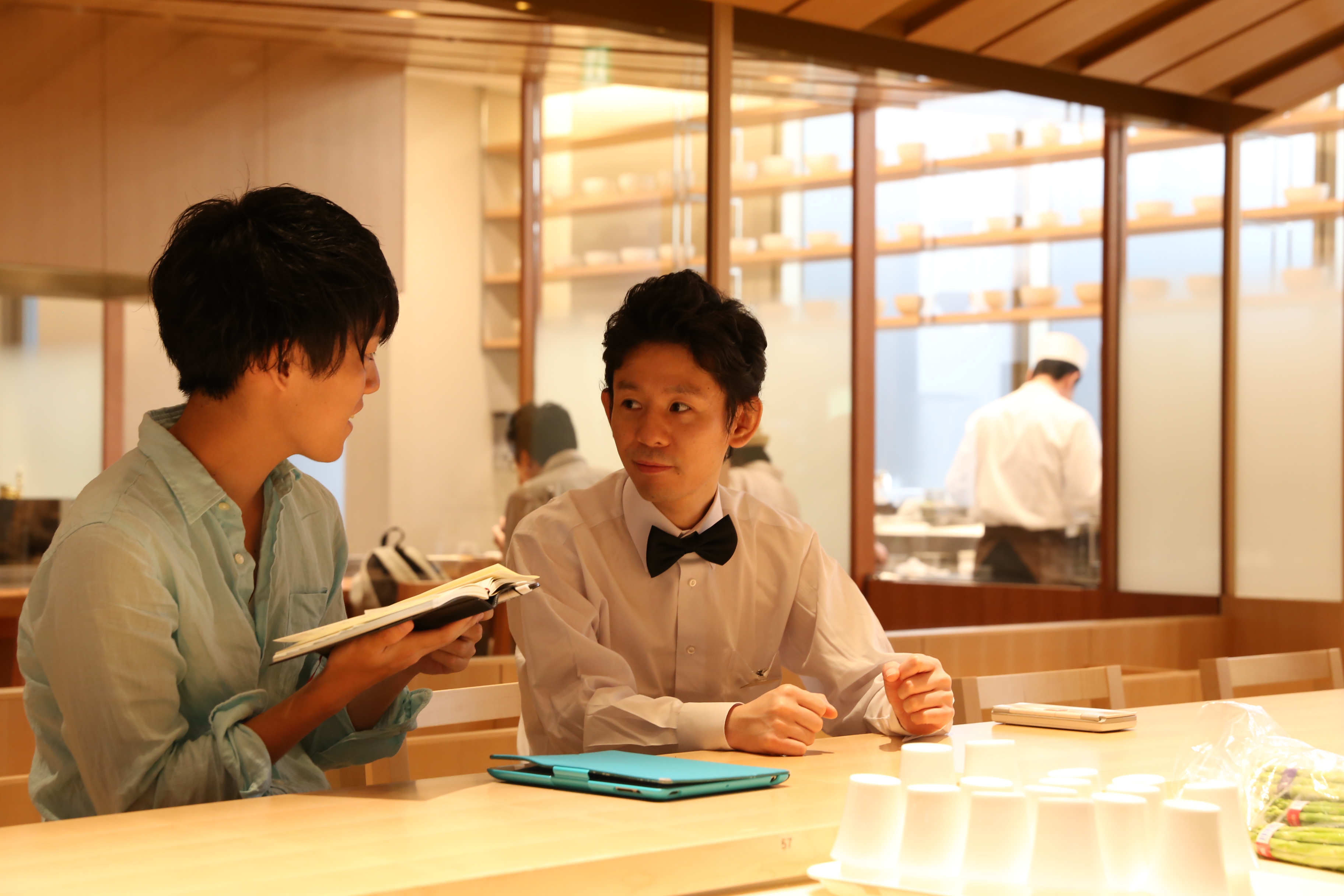Hitoshinaya
- Published
A Japanese restaurant, which put value on ŌĆ£WaŌĆØ (harmony, relaxing), was opened in Tokyo Haneda airport, the gateway to Japan. This time we visited that Japanese restaurant called Hitoshinaya (ŌĆ£hitoshinaŌĆØ means one dish and ŌĆ£yaŌĆØ means restaurant in this case).
Supervised by Hiroshi Nagashima, a modern artisan of Japanese cuisine
A Japanese restaurant that is particular about distinctive ŌĆ£DashiŌĆØ (Japanese broth) and seasonal ingredients
Recently Hitoshinaya has been gaining popularity. The reason is its unique concept. This restaurant is particular about ŌĆ£DashiŌĆØ that is an absolute essence of Japanese food. As you know from the name of the restaurant, it is also specialized for focusing on only one dish. ŌĆ£DashiŌĆØ is known as healthy food, so it is right to say this restaurant is also aware of health.
Another characteristic of Hitoshinaya is that the restaurant is actually three restaurants connected each other under one roof. They have Asagohan that serves breakfast particular about ŌĆ£DashiŌĆØ, Hitohati that provides rice bowl menu that focuses on ŌĆ£DashiameŌĆØ (Thick sauce made out of ŌĆ£DashiŌĆØ), and Surinagashi, a specialized restaurant for ŌĆ£SurinagashijiruŌĆØ ( Japanese style potage soup).
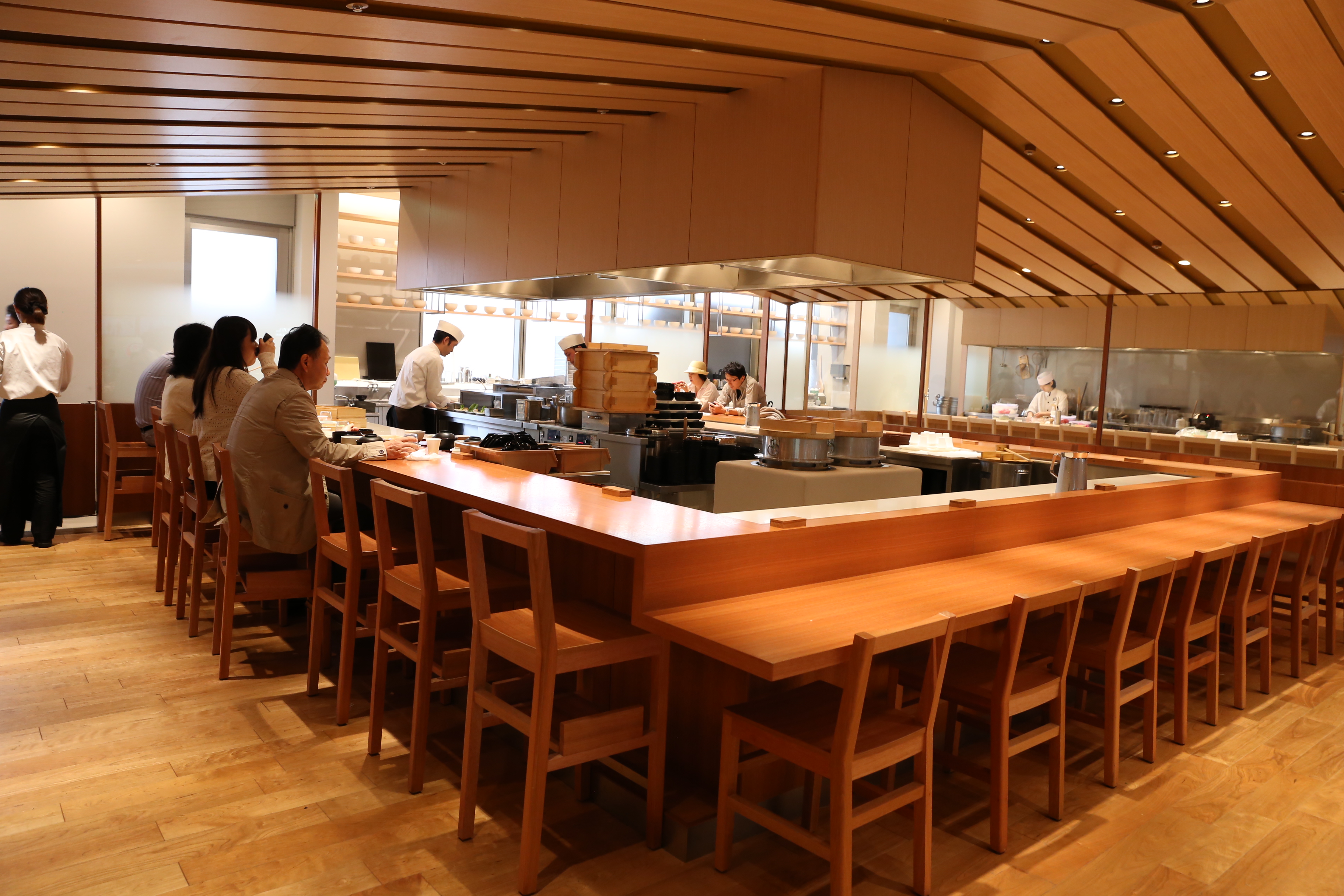
The open hours for Asagohan are from 5:30 to 20:00 and Surinagashi and Hitohati are open from 11:00 to 19:30. Just a few restaurants are open from 5:30 a.m. in Haneda airport. There are many airport users for the flights early in morning. The business comes to a peak between the morning and just before noon and all tables are often filled around that time. There is a reason why the restaurant is divided into three restaurants that are particular about ŌĆ£DashiŌĆØ, but connected to each other. To divide the restaurant by three, each restaurant can focus on one specific dish. If so, the customers can enjoy ŌĆ£true Japanese tasteŌĆØ. Such aspiration is expressed by this design.
There are some other HitoshinayaŌĆÖs aspiration in its design. Each individual restaurant is divided by clear glass so that customers donŌĆÖt feel a barrier. Each of the restaurants is characterized by a different tone and texture of a wood. It interprets the individual character of each restaurant. Therefore, the customers can have a clean feeling and can comfortably have a meal. In Asagohan, the counter is set around the kitchen that has some ŌĆ£HagamaŌĆØ (Japanese traditional rice cooker). The customers can not only can see everything, but also can get open feelings because of this design.
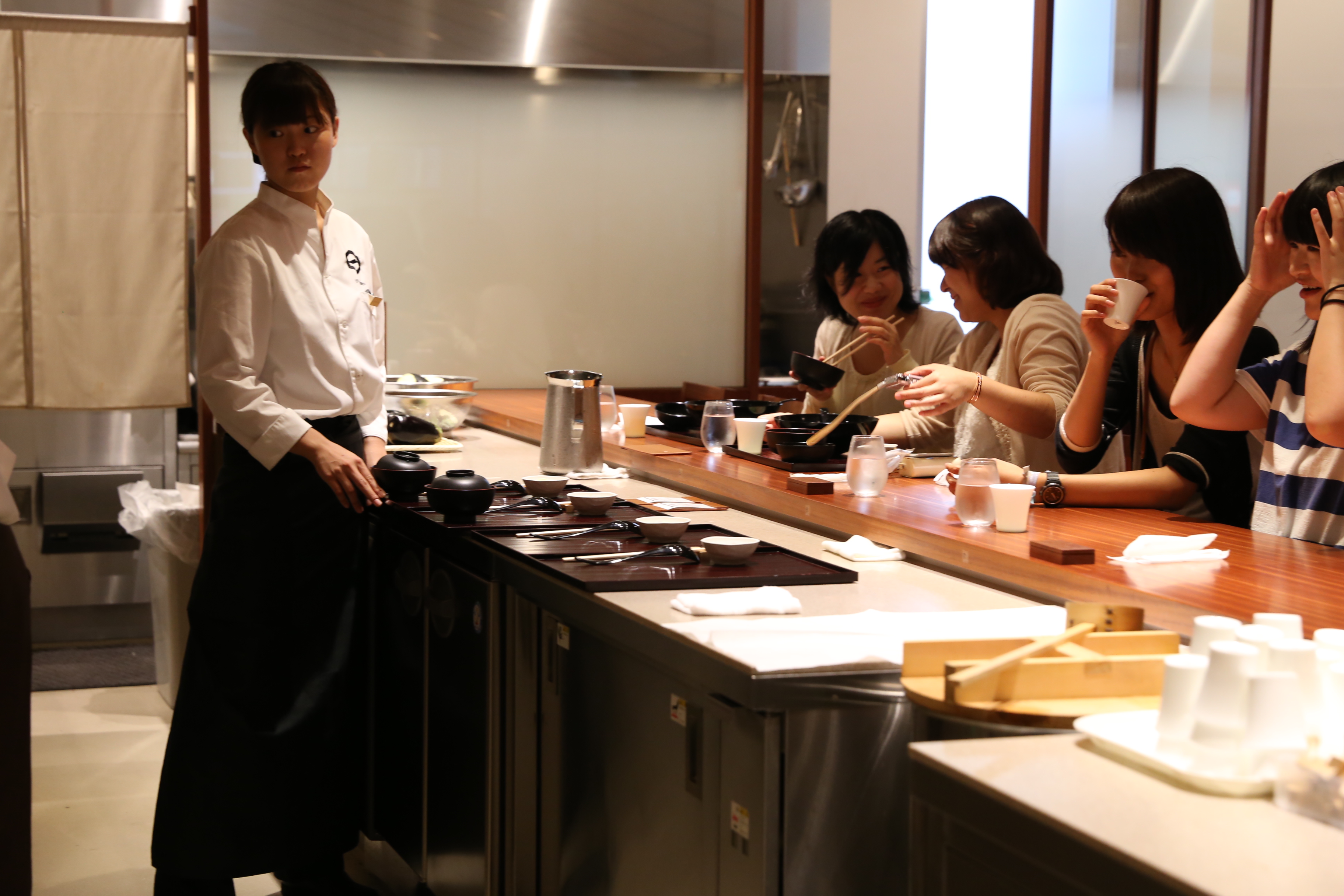
The glass partition walls in the restaurant donŌĆÖt just have the customers feel openness and relaxation. Each restaurant uses a different type of ŌĆ£DashiŌĆØ. The smell from each ŌĆ£DashiŌĆØ must be separated from others so the walls serve such role.
It is also important that the open kitchen was chosen. The open kitchen allows customers see what chiefs are doing in their sights and lets them communicate with chiefs without any obstacle as well. To consider the customers who bring big baggage such as suitcases, the restaurant provides plenty of space to put them aside.
There is some space distinguished from the airport hallway in front of the restaurant. This space has a function as the place where people can relax. They also feel the restaurantŌĆÖs atmosphere before going through Noren (Japanese shop curtain). There is also a menu in front of each section so that the customers can smoothly and comfortably take seats without worry. These careful attentions contribute the distinctive comfort only Hitoshinaya has.
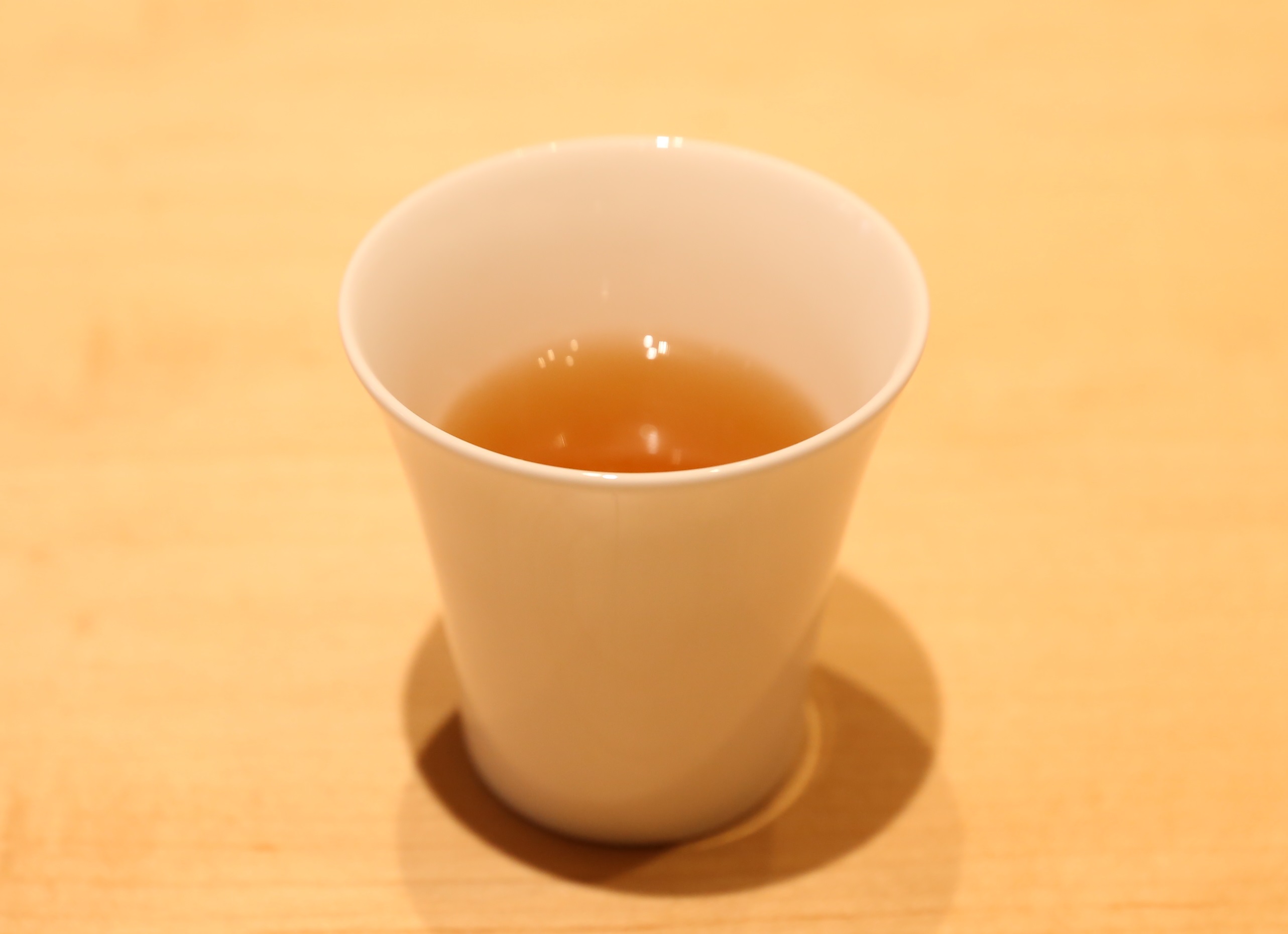
Surinagashi serves only Surinagashi soup (Japanese style thick soup similar to potage). In this Dashi based soup, seasonal vegetables are luxuriously used. Paste made by fish, shrimps, or crabs is also the main and crucial ingredient. This soup is a common dish in Kaiseki-ryori (traditional Japanese course dinner). Hitoshinaya is getting popularity by means of the first specialty restaurant that provides Surinagashi. However, Gomokuchirashi (mixed rice with several vegetables and on top) is also served for the customers who want to have not only a bowl of soup, but also a rice dish. It also can be said that this restaurant is perfect for people who donŌĆÖt have much time to take a meal, but bear in mind to nutritional balance.
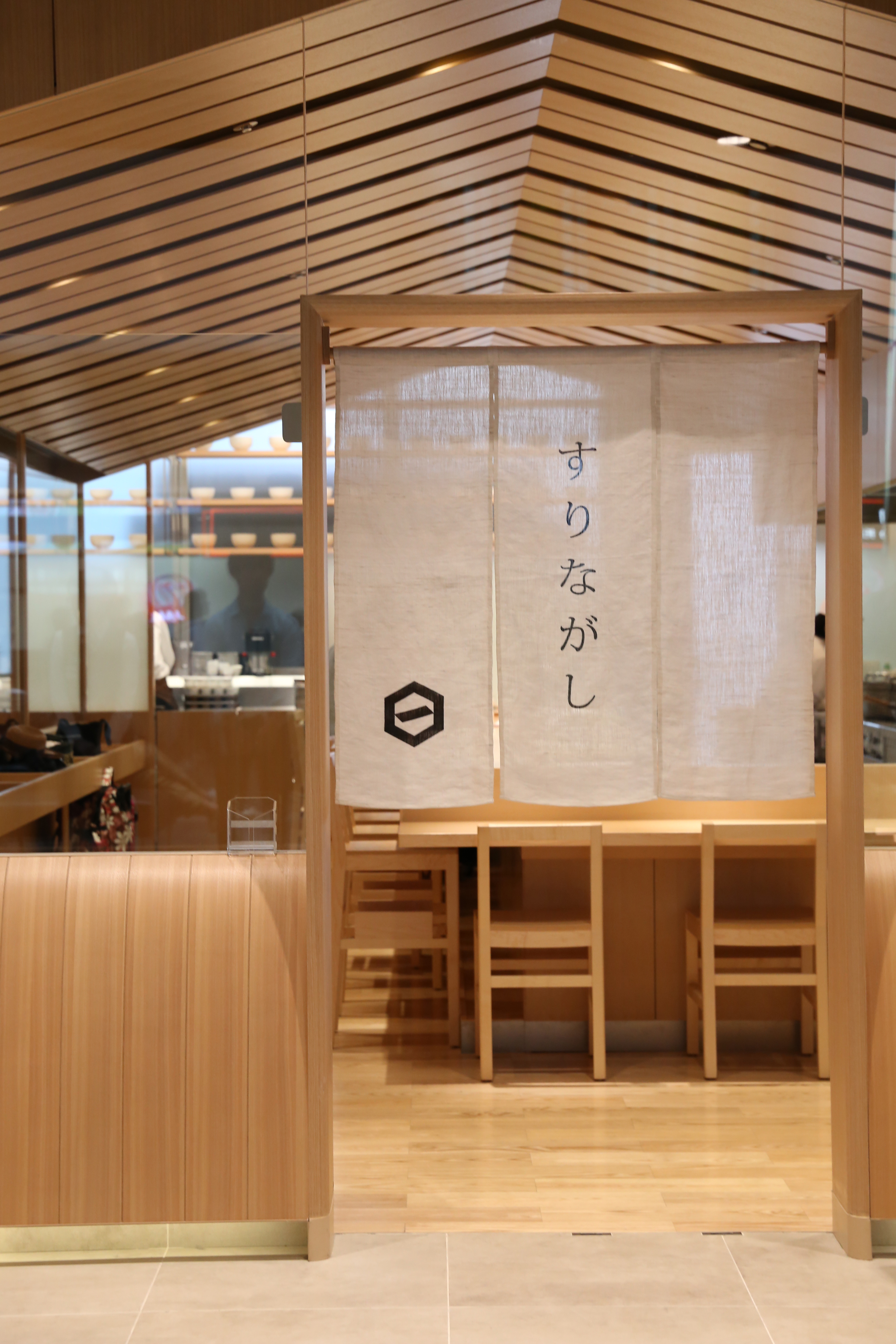
So, what is the reason behind opening a Japanese restaurant that is particular about ŌĆ£DashiŌĆØ in Haneda airport? For the people who come to airports, it is not easy to spend an enough time to have a meal. Quick service is vital for the restaurants in airports. Hitoshinaya is not an exception. In this restaurant, the customers can take a vegetable based light meal that is healthier and nutritionally more balanced. Moreover, they can enjoy authentic Japanese foods before their flights. This point is really meaningful to this restaurant.
Going through the Noren and taking a seat, Dashi is served instead of green tea. Dashi has ŌĆ£UmamiŌĆØ (common description is savory taste or flavor) extracted from seven ingredients such as thickly sliced dried tuna and bonito that are processed by smoking and fermentation, and kelp in the southern part of Hokkaido. In addition to it, surinagashi soup contains an ample amount of seasonal vegetables. It is one of the attractive points of this soup to be able to enjoy rich taste of vegetables. It is especially popular among young female customers because many people think the amino acid contained in fish broth is good for beauty and health. Hitoshinaya served surinagashi soup made by asparaguses, potatoes, and eggplants (now discontinued). This time we have an opportunity to taste asparagus and eggplant surinagashi soup.
Surinagashi soup is called Japanese style potage. We expected a small bowl of soup, but the size was as big as a bowl for ramen noodle. There were also some Shiratama (small rice ball) in it, so the soup had a plenty of volume. Since seven asparaguses are used for a bowl of asparagus shurinagasi soup, the soup is very rich in sweetness of asparaguses. ItŌĆÖs also smooth to the throat. A whole eggplant in skin is used for a bowl of eggplant shurinagasi soup. The taste of eggplants is usually very subtle in a meal, but we were truly satisfied with the taste when we had this soup.
Romanesco cauliflower and lotus root surinagashi soups were presented on the menu in this January. Romanesco cauliflower also known as broccoli is one of the popular cauliflowers in Italy. The best season of lotus roots is from November to February. The customers enjoy those soups with Gomokuchirashi that makes the best use of winter vegetables.
Hitoshinaya is in HanedaŌĆÖs domestic terminal, but the customers from other countries have been also gradually increasing to taste authentic Japanese cuisine. Tokyo Olympics will be held in 2020. The Owner of Hitoshinaya hopes more people from abroad will come and enjoy the taste of real Japanese ŌĆ£DashiŌĆØ in this restaurant.
We truly recommend going to a Japanese restaurant Hitoshinaya and trying some ultimate Japanese dishes.
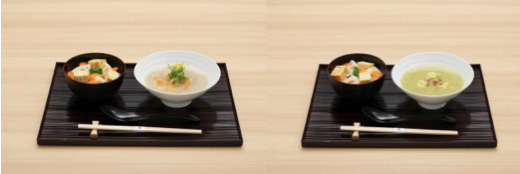
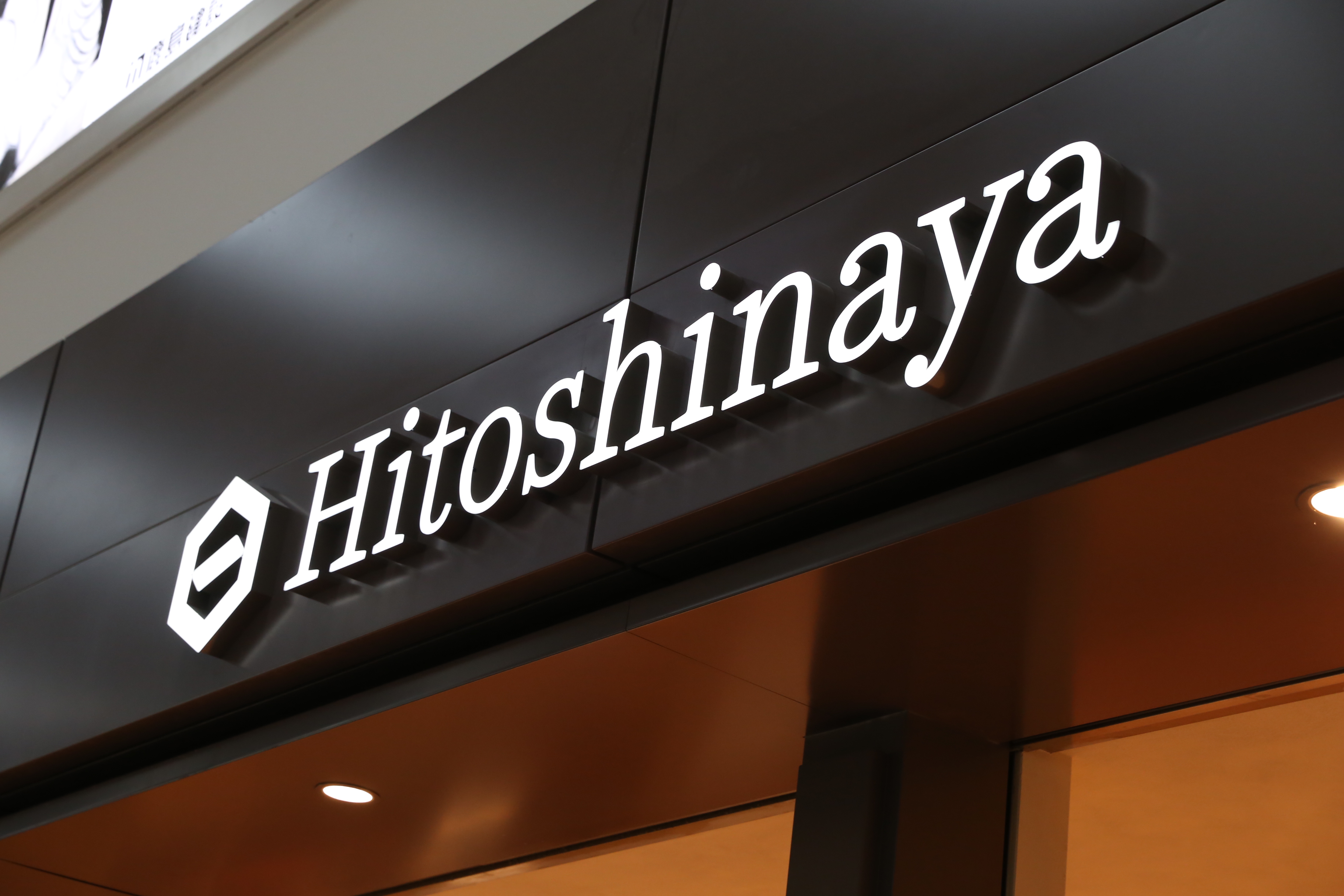
HItoshinaya
Address
Haneda Airport Terminal 1, North Wing 2F
3-3-2 Hanedakuko,
Ota-ku, Tokyo
Phone
03-5757-8853

